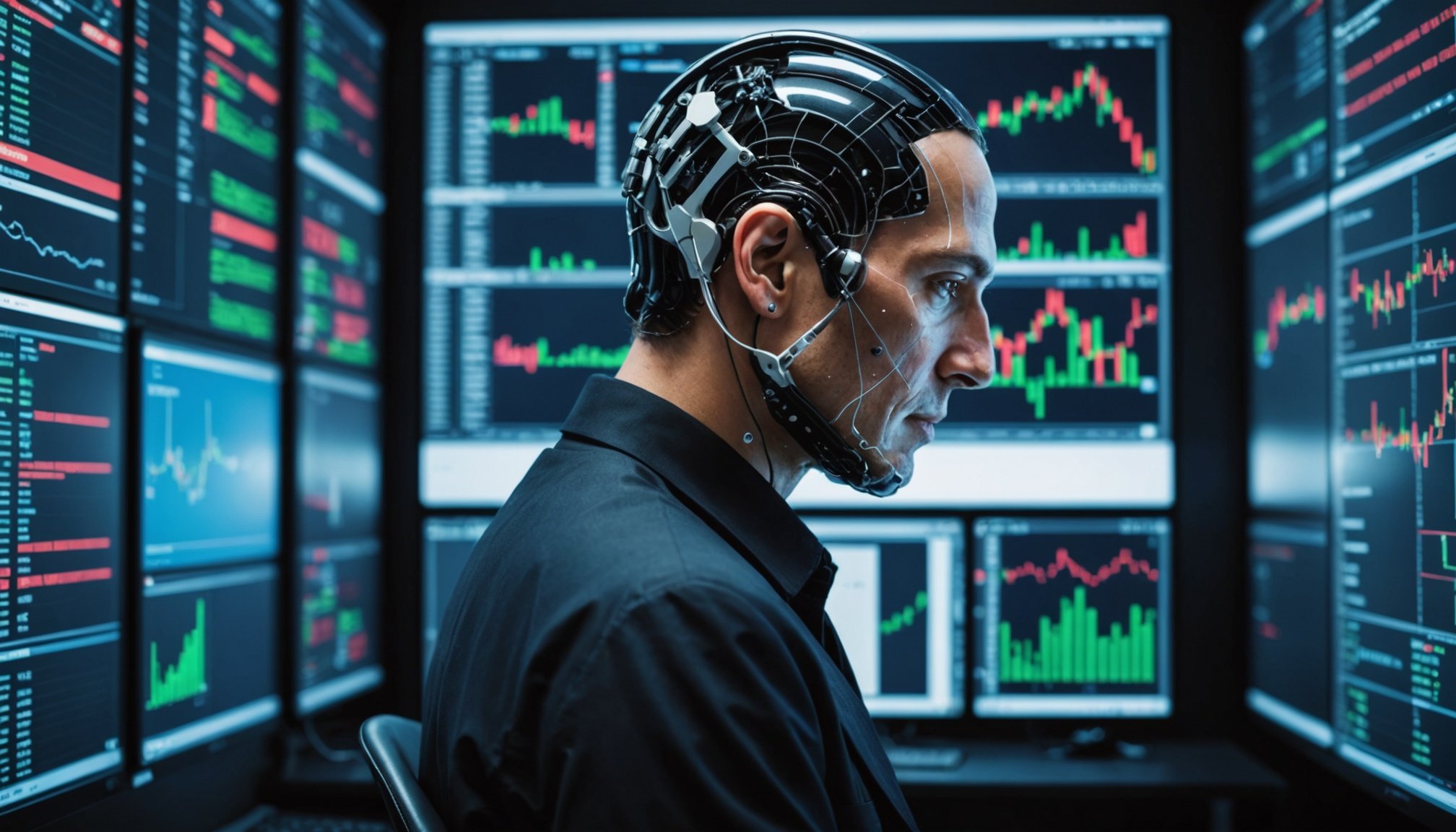Unlocking Trading Success: The Role of AI in Elevating Precision in Financial Market Algorithms
In the fast-paced and highly competitive world of financial markets, the quest for precision and accuracy has never been more crucial. The advent of Artificial Intelligence (AI) has revolutionized the trading landscape, enabling traders to make more informed decisions and maximize their profits. In this article, we will delve into the role of AI in elevating precision in financial market algorithms, exploring its benefits, key performance metrics, and practical applications.
How AI Enhances Trading Precision
AI has transformed the trading environment by introducing sophisticated algorithms that can analyze vast amounts of data in real-time. These algorithms, powered by machine learning and historical data, can identify patterns and trends that might elude human traders.
Also read : Mastering ai: innovative approaches to enhance fraud prevention systems
Advanced Data Analysis
AI trading systems leverage big data to analyze market conditions, historical trends, and real-time market data. For instance, Trader AI uses advanced algorithms to examine past market trends, price movements, and transaction volumes to detect patterns and identify trading opportunities[1].
Real-Time Insights
Real-time data analysis is a cornerstone of AI-driven trading. Platforms like Trader 2.0 Intal and Broadridge’s NYFIX service provide traders with real-time alerts and in-trade analysis, allowing for immediate adjustments to stay aligned with their objectives. This real-time capability ensures that traders can react swiftly to changing market conditions, thereby enhancing their decision-making process[3][4].
In the same genre : Boost cybersecurity through strategic product lifecycle strategies
Sentiment Analysis
AI can also perform sentiment analysis to gauge market sentiment from news articles, social media, and other sources. This additional layer of analysis helps in making more accurate predictions about future market trends.
Key Performance Metrics for AI Trading Bots
Evaluating the performance of AI trading bots is crucial for understanding their effectiveness and reliability. Here are some key metrics to consider:
Accuracy, Precision, and Recall
- Accuracy: Measures the proportion of correct predictions made by the bot.
- Precision: Indicates the number of true positive predictions divided by the total number of positive predictions.
- Recall: Measures the number of true positive predictions divided by the total number of actual positive cases[2].
F1 Score and Sharpe Ratio
- F1 Score: The harmonic mean of precision and recall, providing a balanced view of the bot’s performance.
- Sharpe Ratio: Measures the risk-adjusted return of the bot, indicating its performance relative to risk[2].
Maximum Drawdown and Alpha
- Maximum Drawdown: Represents the largest drop from a peak to a trough in the value of a portfolio.
- Alpha: Indicates the excess return of an investment relative to the return of a benchmark index[2].
Table: Key Performance Metrics for AI Trading Bots
| Metric | Description |
|---|---|
| Accuracy | Proportion of correct predictions |
| Precision | True positive predictions / Total positive predictions |
| Recall | True positive predictions / Actual positive cases |
| F1 Score | Harmonic mean of precision and recall |
| Sharpe Ratio | Risk-adjusted return |
| Maximum Drawdown | Largest drop from a peak to a trough in portfolio value |
| Alpha | Excess return relative to a benchmark index |
| Balanced Accuracy | Adjusts for class imbalance by averaging accuracy of each class |
| Sortino Ratio | Focuses on downside volatility |
Algorithmic Trading Strategies Powered by AI
AI trading systems employ a variety of strategies to optimize performance:
Mean Reversion
This strategy assumes that asset prices will revert to their historical mean over time. AI can identify overbought or oversold conditions to capitalize on price corrections[2].
Momentum Trading
This strategy focuses on buying assets that are trending upwards and selling those that are trending downwards. AI can analyze patterns and execute trades based on momentum indicators[2].
Arbitrage
AI can quickly identify and act on price discrepancies between different markets or instruments, exploiting these opportunities before they disappear[2].
Practical Applications and Benefits
Automated Trading
AI trading bots like Trader AI and Trader 2.0 Intal automate the trading process, freeing traders from the need to constantly monitor markets. These bots can execute trades automatically based on predefined parameters, ensuring timely and precise decision-making[1][3].
Risk Management
AI-driven trading systems are designed to minimize risk by using sophisticated algorithms that are not affected by human emotions or biases. For example, Trader AI uses advanced algorithms to detect patterns and make decisions without the influence of emotional factors[1].
Access to Diverse Assets
AI trading platforms often provide access to a wide range of assets, including cryptocurrencies, forex, indices, stocks, and commodities. This diversity allows traders to diversify their portfolios and explore various trading opportunities[1].
Educational Resources
Platforms like Trader 2.0 Intal and AvaTrade offer educational resources and tutorials to help traders improve their skills. These resources are particularly beneficial for beginners, enabling them to optimize their strategies and reduce the risks associated with trading[3][5].
Real-World Examples and Success Stories
Broadridge’s NYFIX Service
Broadridge’s innovative AI-powered algorithm insights service for NYFIX is a prime example of how AI can transform trading. This service uses real-time liquidity mapping and historical insights to empower asset managers and hedge funds to achieve unprecedented accuracy and cost-efficiency[4].
Trader AI
Trader AI has been praised for its high precision and reliability. By using advanced trading algorithms and machine learning techniques, it helps traders make informed decisions and maximize their profits. As noted by one review, “Trader AI is a judicious choice for traders in 2025, offering great reliability and high precision in decision-making”[1].
Future of AI in Trading
The future of trading is undoubtedly driven by AI. As technology continues to evolve, we can expect even more sophisticated algorithms and better integration of AI into trading systems.
Enhanced Decision Making
AI will continue to enhance decision-making processes by providing more accurate and timely insights. This will enable traders to react swiftly to market changes and make more informed decisions.
Increased Automation
Automation will become more prevalent, allowing traders to focus on strategy development and risk management rather than manual trading.
Improved Risk Management
AI will play a critical role in risk management by identifying potential risks and opportunities more accurately. This will help traders minimize losses and maximize gains.
Practical Advice for Traders
Monitor Performance Metrics
Regularly monitor the performance metrics of your AI trading bot to ensure it is performing optimally. Adjust parameters as necessary to maintain high precision and recall.
Stay Updated with Market Trends
Keep abreast of the latest market trends and conditions. AI can provide real-time insights, but human oversight is still crucial for making strategic decisions.
Diversify Your Portfolio
Use AI trading platforms to access a diverse range of assets. Diversification can help mitigate risks and increase potential returns.
Leverage Educational Resources
Take advantage of the educational resources provided by trading platforms. These can help you improve your trading skills and optimize your strategies.
In conclusion, AI has revolutionized the trading landscape by introducing precision, automation, and advanced data analysis. By understanding the key performance metrics, algorithmic trading strategies, and practical applications of AI, traders can make more informed decisions and maximize their profits.
As George Rosenberger, Head of NYFIX at Broadridge, aptly put it, “By harnessing the power of AI and historical insights, we’re giving our clients the tools they need to navigate complex markets with greater precision and confidence.”[4]
Whether you are a beginner or an experienced trader, integrating AI into your trading strategy can be a game-changer. So, don’t miss this opportunity to join the growing number of investors who are leveraging AI to succeed in the financial markets. Start trading with confidence today.











